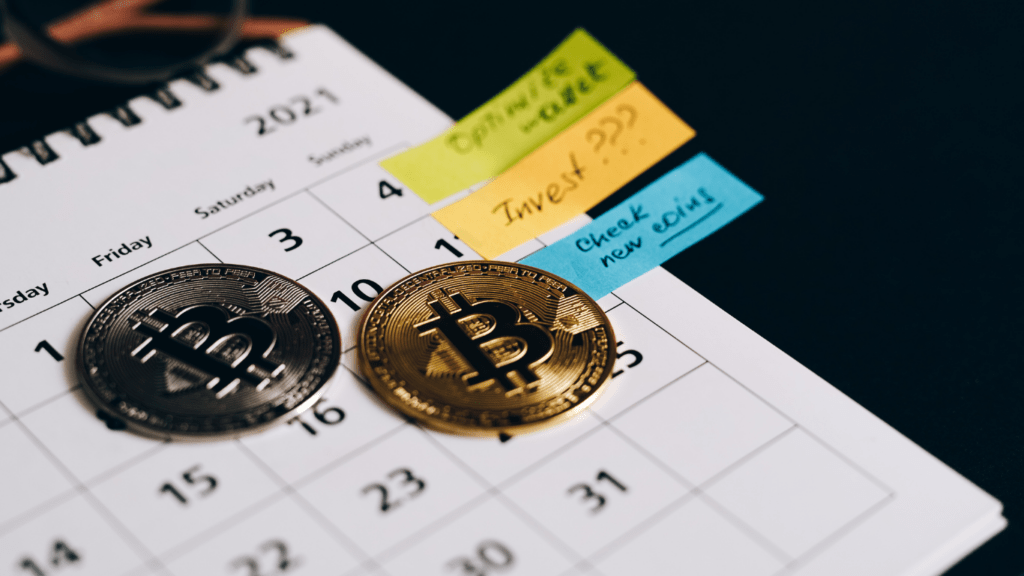Understanding Common Crypto Trading Mistakes
Mistakes in crypto trading can be costly. Knowing these mistakes helps traders prevent potential losses. Here are the most common errors:
Failing to Do Research
Many traders jump into the market without proper research. They follow tips from influencers or friends without understanding the project behind the coin. Conducting thorough research on the cryptocurrency’s fundamentals, team, and technology is crucial.
Overtrading
Overtrading occurs when traders execute too many trades in a short period. This behavior can lead to significant losses due to transaction fees and market volatility. It’s essential to develop and stick to a well-defined trading strategy.
Ignoring Risk Management
Risk management is often overlooked. Without setting stop-loss orders or allocating an appropriate portion of the portfolio to each trade, traders expose themselves to excessive risk. Setting clear risk management rules helps mitigate potential losses.
Falling for FOMO
Fear of missing out (FOMO) drives many traders to buy at peak prices. This behavior can lead to significant losses if the market corrects. Patience and discipline are key to avoiding impulsive decisions driven by FOMO.
Not Diversifying
Putting all funds into a single cryptocurrency is risky. Diversification spreads risk across different assets, reducing the impact of a single asset’s poor performance.
Emotional Trading
Emotional responses lead to poor decision-making. Trading decisions based on fear, greed, or excitement often result in losses. Maintaining a detached, analytical approach to trading helps improve outcomes.
Neglecting Security
Security lapses can lead to loss of funds. Using weak passwords, not enabling two-factor authentication, or storing funds on an exchange are common mistakes. Prioritizing security measures protects against hacks and theft.
Misunderstanding Market Trends
Failing to understand and analyze market trends often results in poor timing of trades. Analyzing historical price patterns and current market conditions enables better decision-making.
Unrealistic Expectations
- Expecting unrealistic returns leads to reckless trading.
- Crypto markets are volatile, and profits aren’t guaranteed.
- Having realistic goals helps manage expectations and maintain a long-term perspective.
- Understanding these common mistakes enhances traders’ ability to navigate the volatile crypto market efficiently.
- Trading successfully requires knowledge, strategy, discipline, and security awareness.
Setting Unrealistic Expectations
Traders often set unrealistic expectations, which can lead to significant losses and disappointments.
Overestimating Potential Gains
Many traders anticipate substantial profits without considering the market’s inherent volatility. Some expect their investment to double or triple in a short period.
This mindset leads to high-risk trades and can result in financial setbacks. For instance, new traders might expect Bitcoin to surge dramatically based on media hype, ignoring historical price fluctuations. Analyze historical data and remain cautious. Recognize that consistent, modest gains are more sustainable than chasing unrealistic profits.
Underestimating Risks
Traders often overlook the numerous risks associated with crypto investments. Many might not account for market volatility, cybersecurity threats, or regulatory changes.
These factors can drastically impact asset values. For example, regulatory announcements can cause sudden market drops, affecting even well-researched investments. Always consider worst-case scenarios; diversification and contingency planning are crucial. Understanding and preparing for these risks helps create a more resilient trading strategy.
Failing to Diversify Your Portfolio

Diversifying your portfolio is critical in crypto trading. Without diversification, you expose yourself to unnecessary risks.
Investing All in One Coin
Putting all your funds into a single cryptocurrency creates vulnerability. If that coin’s value drops sharply, you risk significant losses. By spreading investments across multiple coins such as Bitcoin, Ethereum, and Binance Coin, you mitigate losses from one coin’s poor performance with gains from others.
Ignoring Different Asset Classes
Focusing solely on cryptocurrencies limits potential growth. Cryptos can be highly volatile, so balanced exposure to other asset classes like:
- stocks
- bonds
- commodities
helps stabilize your portfolio.
For example, while Bitcoin can fluctuate wildly, a stable bond investment offers more consistent returns. Diversifying across asset classes increases resilience against market downturns.
Lack of Proper Research
Failing to conduct proper research can derail any trading strategy. It’s crucial to gather accurate and detailed information before making investment decisions.
Following Herd Mentality
Many traders follow the herd without personal analysis, leading to losses. They often buy when prices surge and sell during declines, driven by market hype. Examining a coin’s fundamentals like technology, use case, and team, instead of herd mentality, improves decision-making.
Trusting Unverified Sources
Relying on unverified sources risks financial loss. Scams and misinformation are rampant in crypto circles. Authenticity and reliability should be the benchmarks for any information source. For instance, consult official project pages, whitepapers, and credible news sites.
Poor Risk Management
Implementing effective risk management is vital in crypto trading to protect investments and ensure long-term success.
Ignoring Stop-Loss Orders
Ignoring stop-loss orders can result in significant financial losses. A stop-loss order automatically sells specified assets when they fall to a predetermined price, limiting potential harm.
Consider a scenario where Bitcoin’s price plummets unexpectedly. If you set a stop-loss order, the system sells your Bitcoin once it hits the predetermined limit, preserving a portion of your investment.
Investing More Than You Can Afford to Lose
Investing more than you can afford to lose exposes you to extreme financial risk. Only allocate funds you don’t need for essential living expenses. For instance, committing a significant portion of your savings to a volatile market could jeopardize your financial stability if the market crashes.
Prioritize a budget where crypto investments constitute a small, manageable fraction of your total assets, ensuring financial safety regardless of market conditions.
Emotional Trading
Emotional trading often leads to costly mistakes in the crypto market. Managing emotions is crucial to making rational decisions and protecting investments.
Reacting to Market Hype
Market hype can skew perceptions of an asset’s true value. Many traders get swept away by the “fear of missing out” (FOMO), which often leads to unplanned buys during price surges. To combat FOMO, I set clear entry and exit points based on research and not on prevailing sentiments. Following a pre-defined strategy helps me remain disciplined and ignore hype-driven urges.
Panic Selling
Panic selling happens when prices drop sharply, causing traders to sell off assets impulsively. This behavior can lock in losses and prevent potential recovery gains.
I use stop-loss orders to mitigate this risk. Additionally, maintaining a long-term perspective helps me stay calm during market fluctuations. By focusing on my original investment strategy, I avoid reactionary decisions and ensure that temporary downturns don’t dictate my trading actions.

 Alice Morillo is a prominent figure at The Digi Chain Exchange, known for her passion and expertise in the field of cryptocurrency and digital finance. With a keen interest in the evolving landscape of blockchain technology, Alice has dedicated herself to providing insightful content that helps both new and seasoned investors navigate the complexities of the crypto world. Her contributions to The Digi Chain Exchange reflect her deep understanding of market trends, trading strategies, and the regulatory environment surrounding digital assets.
Alice Morillo is a prominent figure at The Digi Chain Exchange, known for her passion and expertise in the field of cryptocurrency and digital finance. With a keen interest in the evolving landscape of blockchain technology, Alice has dedicated herself to providing insightful content that helps both new and seasoned investors navigate the complexities of the crypto world. Her contributions to The Digi Chain Exchange reflect her deep understanding of market trends, trading strategies, and the regulatory environment surrounding digital assets.

